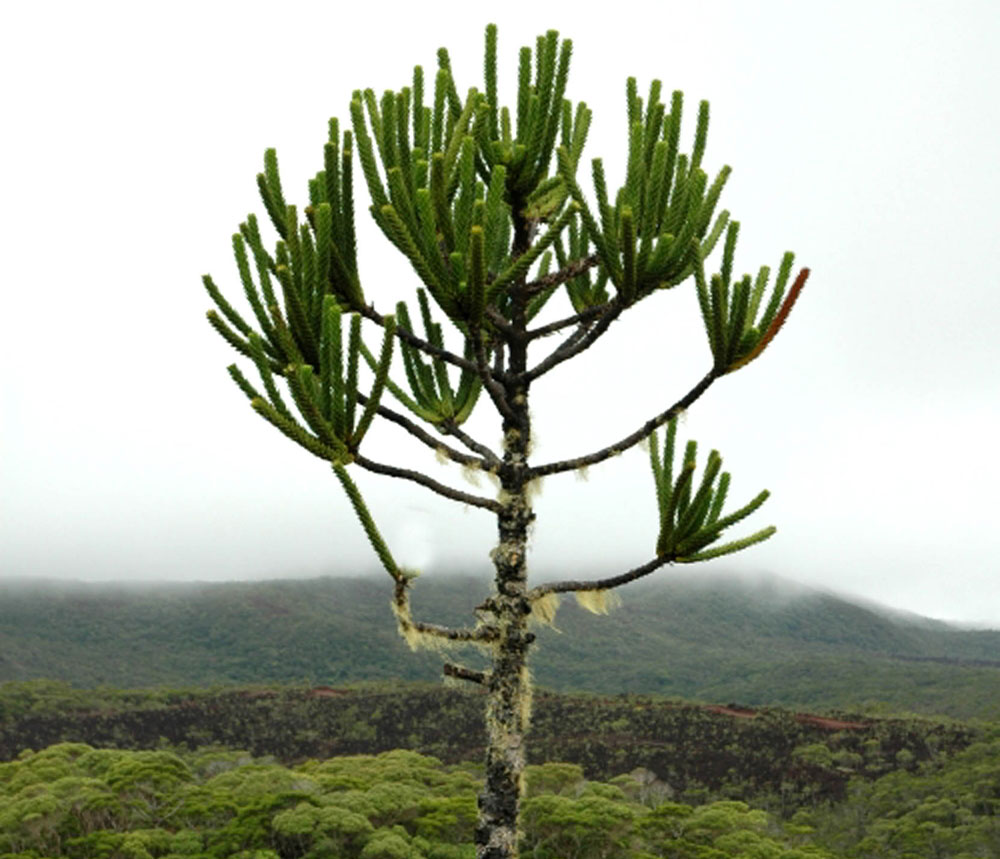SCOTS scientists have discovered a new species of monkey puzzle tree that had been “hiding” under their noses for almost two decades.
Researchers from the Royal Botanic Garden Edinburgh (RBGE) have spent the past 17 years studying monkey puzzle trees on New Caledonia, an island in the South Pacific.
To their amazement, the team recently realised that the trees included a previously unknown species – the first to be discovered for 47 years.
The tree – which has yet to be officially named – had been “hiding in plain sight” according to the title of the academic paper which revealed the discovery.
Spotting the new monkey puzzle came just in time for the species as the area was about to be cleared for a new nickel mine.
The species is around 200 million years old, dating it back to the time of the dinosaurs.
Researchers simply noticed a group of trees which “looked a bit different” to others on the island.

Upon closer inspection, they noticed they had larger leaves than the rest and the shape of the cones was inconsistent.
After running extensive genetic tests they discovered it was distinct enough to be considered a whole new species.
They have now published a paper on their findings, titled: “Hidden in plain view: Cryptic diversity in the emblematic Araucaria of New Caledonia.”
Professor Philip Thomas, a scientific officer who was present on the expedition, said: “The trees live in a very hostile environment and have a thick, leathery foliage. They are very distinctive, and often commonly associated with the dinosaurs.
“It’s very rewarding to discover a new species after all these years – it was quite a surprise since the monkey puzzle trees are pretty well known.
“We still have a lot of genetic work to do, and our main focus is on their conservation on the island.
“In this case the new species was limited to the Goro Plateau, where locals are currently establishing the largest nickel mine to date.
“The planners are now going to have to think about things much more carefully and take this newly discovered species into account.”
It is believed the tree gained its name from early cultivation in Britain in 1850, when noted Barrister Charles Austin remarked “It would puzzle a monkey to climb that”.
Professor Pete Hollingsworth, Director of Science at RBGE, said that the species now faces a “massive challenge”.
“New Caledonia has an amazing flora, with many incredible species found nowhere else on earth,” he said.
“But this biodiversity faces a massive challenge – New Caledonia is a major source of the world’s nickel.
“Our paper tackles this issue – for arguably the most charismatic group of trees in this most charismatic of floras – the Monkey Puzzle trees.
“Our work shows the presence of a previously unrecognised new species – and shows that a second species is much rarer than previously thought. This information is essential for conservation planning.”
The monkey puzzle tree is native to the Chilean and Argentinian south-central Andes, but is now found in gardens across the world.
They are an evergreen tree and can grow up to 50m tall – though it can take up to 500 years to grow just one metre.
Their leaves are spiky, stiff and leathery and are arranged spiralling around the trunk, pointing towards the sky.
It is believed the tree gained its name from early cultivation in Britain in 1850, when noted Barrister Charles Austin remarked “It would puzzle a monkey to climb that”.

